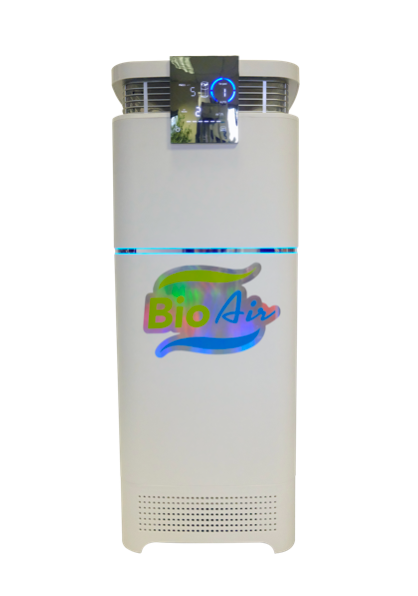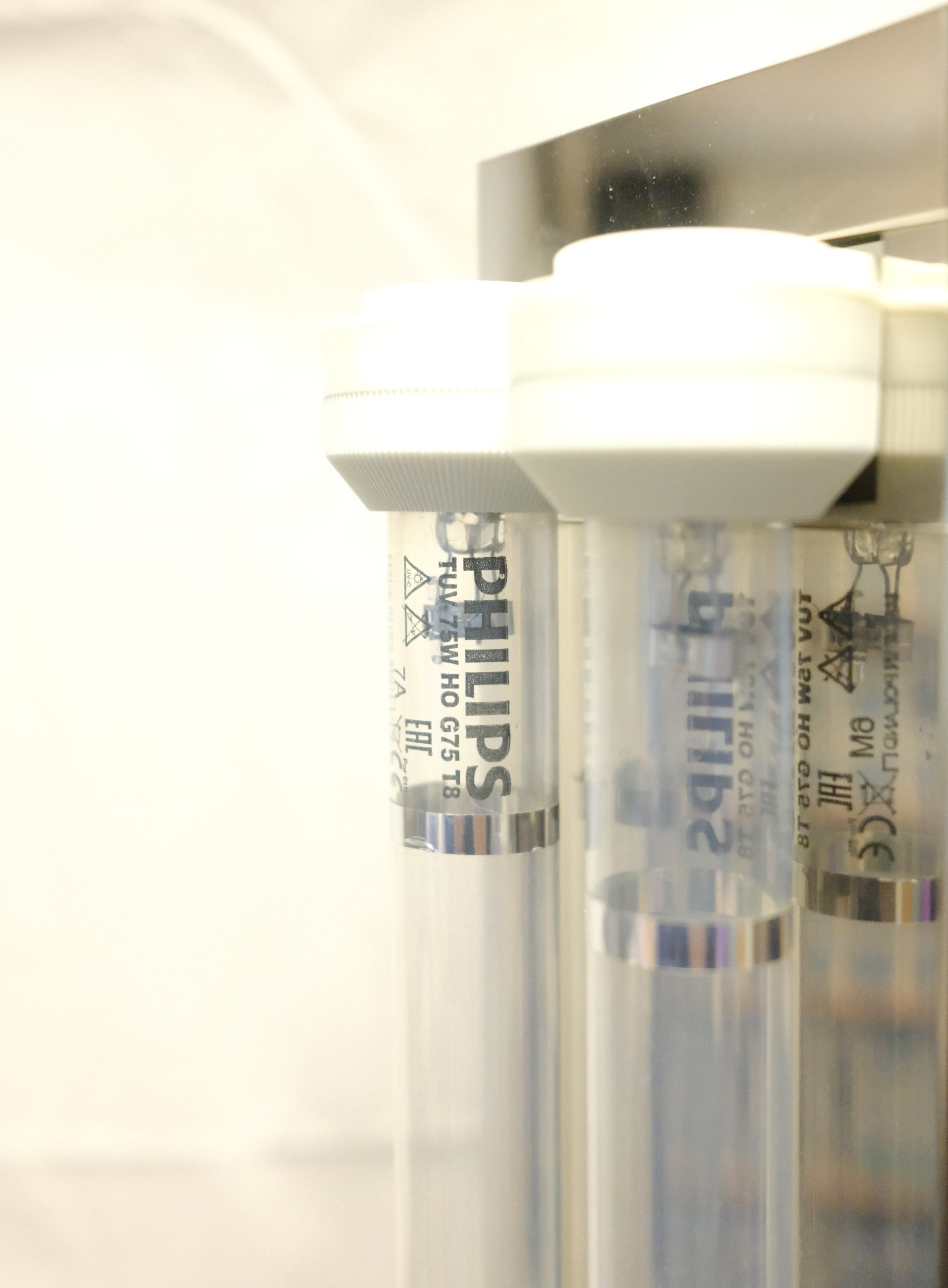WHY UV-C TECHNOLOGY?
What is UV Radiation?
All radiation is a form of energy, most of which is invisible to the human eye. UV radiation is only one form of radiation and it is measured on a scientific scale called the electromagnetic (EM) spectrum.
UV radiation is only one type of EM energy you may be familiar with. Radio waves that transmit sound from a radio station’s tower to your stereo, or between cell phones; microwaves, like those that heat your food in a microwave oven; visible light that is emitted from the lights in your home; and X-rays like those used in hospital X-ray machines to capture images of the bones inside your body, are all forms of EM energy.
UV radiation is the portion of the EM spectrum between X-rays and visible light.
The most common form of UV radiation is sunlight, which produces three main types of UV rays: UVA, UVB and UVC


Disinfection at the Speed of Light!
What are the different types of uv radiation?
UVA rays have the longest wavelengths, followed by UVB, and UV-C rays which have the shortest wavelengths. While UVA and UVB rays are transmitted through the atmosphere, all UV-C and some UVB rays are absorbed by the Earth’s ozone layer.
So, most of the UV rays you come in contact with are UVA with a small amount of UVB.
Like all forms of light on the EM spectrum, UV radiation is classified by wavelength. Wavelength describes the distance between the peaks in a series of waves.
UVB rays have a short wavelength that reaches the outer layer of your skin (the epidermis)
UVA rays have a longer wavelength that can penetrate the middle layer of your skin (the dermis)

UV: Efficient & Safe
UV-C Germicidal Fixtures increase the value of all air conditioning and air-circulating systems by:
- Maximizing system efficiency
- Prolonging blower life
- Providing healthier air to breathe
Treating air that passes through an air sanitising unit with ultraviolet light will reduce, or eliminate, DNA-based airborne contaminants (bacteria, viruses, mould spores, yeast, protozoa), and provide much healthier air to breathe.
UV-C Germicidal Fixtures are a labour-free solution that will not harm occupants, equipment or furnishings because they produce no ozone or secondary contaminants.
For more than 70 years, thousands of UV-C of pieces of equipment have been safely installed in hospitals, clinics, processing plants, commercial offices, manufacturing sites and other commercial facilities and multi-and single-family residences around the world.
UV: Financial Benefits
UV-C Germicidal Fixtures keep coils clean all of the time, enabling HVAC systems to perform as originally intended, and ensuring:
- System efficiency
- Longer equipment life
- Lower energy and maintenance costs
They'll often pay for themselves in months and can help you save many thousands of pounds in on-going energy and maintenance costs.
In addition, UV-C Germicidal Fixtures play a very important role in improving air quality.
They will eliminate the awful odour and slimy build up associated with mould and bacteria that thrive when temperatures are between 50-100F (especially when moisture is present).
These make air unhealthy for all building and residential occupants.
Healthier employees mean better productivity and less sick time.

How do I know that the Ultra Violet Process has worked?
Your local UltraV International office can provide you with our UV Fast Check Strips. They are simple, reliable and easy to use indicators of accumulated UV light dosage.
They are the first product of their type that can be used to determine levels of UV dose with a simple, visual inspection due to five separate colour changing zones. Ask your local UltraV International representative for more information.
UV: Safety
UltraV products utilise Germicidal Ultraviolet (UV-C lamps) suitable for both air and surface disinfection.
Some of our products are designed for use in unoccupied areas eg. Ultrav BioAir .
Others are designed for use in unoccupied areas.
At NO time should products for use for unoccupied areas be permitted to operate with humans, animals or plants in the operation area.


